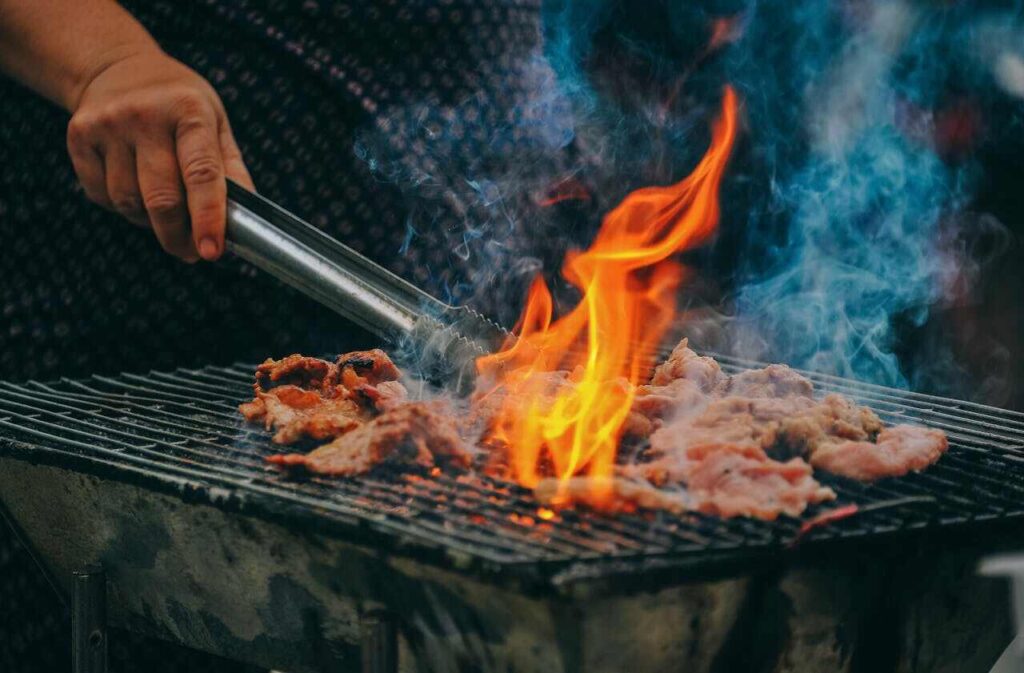Kitchen tongs serve as one of the most versatile tools in any culinary arsenal, offering quick, reliable, and safe handling of a wide range of foods. Think of them as an extension of your hand, transforming how we manage hot, slippery, or delicate items. From professional kitchens in bustling restaurants to cozy home kitchens, the impact of selecting the right custom tongs can be monumental, optimizing your cooking processes and ensuring that meal preparations proceed smoothly and efficiently.
Every kitchen can benefit from the adaptability that high-quality tongs provide. These tools are much more than simple pincers—they are a testament to the evolution of cooking practices, harmonizing safety and functionality. Let’s delve into how these simple tools make an enormous difference in daily cooking routines, ensuring ease and efficiency every step of the way.
Choosing the Right Kitchen Tongs
Material Matters
When it comes to selecting the perfect tongs, material is a significant consideration. Stainless steel tongs stand as the quintessential choice due to their durability, resistance to corrosion, and heat resilience. They’re ideal for tasks such as deep frying or grilling, where robustness matters most. On the other hand, silicone-tipped tongs protect your cookware from scratches, making them favored for their gentility when dealing with coated surfaces. Meanwhile, wooden tongs, though less common, offer a tactile quality and aesthetic charm suited for stylish serving at the dinner table. However, they do require attentive care to maintain their longevity.
Length and Design Features
The length and design of kitchen tongs directly influence their practicality and ease of use. For instance, long-handled tongs provide the necessary distance to protect your hands from the intense heat of a bustling grill or hot oven. This makes them the right choice for grilling enthusiasts or when cooking over open flames. Conversely, short tongs or those with spring-loaded designs offer precision and finesse crucial for delicate tasks such as serving salads or flipping smaller food items. Features such as locking mechanisms can enhance user convenience, allowing for easier storage and optimized control during use.
Ergonomics and Grip
Comfort and control are pivotal when using tongs, particularly during prolonged cooking sessions. Ergonomically designed tongs that incorporate features like padded grips and structured angles can substantially reduce hand strain and enhance control. Non-slip handles are particularly advantageous in busy kitchen environments where grease or moisture could compromise grip. Ensuring that your selected tongs fit comfortably in your hand can elevate their functionality from mere utensils to indispensable kitchen partners, facilitating all cooking pursuits with greater ease and accuracy.
Different Types of Kitchen Tongs and Their Uses
Tongs are an unsung hero in the culinary toolkit, differentiated by the variety of specific uses they serve. Each type, from the most basic to the most specialized, plays a unique role in the kitchen. Keeping the right tool for specific tasks at hand ensures that you maintain efficiency and safety standards. It’s akin to matching the right paintbrush to a canvas, where grilling tips often highlight the necessity of the perfect tool for optimal results.
All-Purpose Tongs
These adaptable utilities are the go-to option for general use, capable of handling everything from flipping bacon strips to stirring pasta and even serving as precision tools when rearranging baked vegetables. Their wide usage potential makes them indispensable in any cooking setup, making the work of everyday kitchen duties seamless.
Grilling Tongs
Created with longer arms and heat-resistant materials such as stainless steel or high-grade silicone, grilling tongs are tailored for environments with high heat exposure. Their design is concentrated on user safety, offering both length and heat-buffering qualities that prove invaluable when engaging in activities such as flipping barbecued items or managing a boiling pot. Whether flipping burgers on a blazing grill or as part of a live-fire cooking setup, they provide both the reach and precision needed.
Salad Tongs and Other Specialty Tools
For serving leafy dishes, salad tongs designed with gentle cupping grips are ideal, allowing users to manage greens without crushing or bruising them. In the realm of specialty tools, diversity in design meets various needs, from spaghetti toasts to ice grip tongs, each crafted to carry out its requisite function with enhanced precision and care.
Benefits of Using Kitchen Tongs
Improved Safety and Precision
The versatility of tongs means you can handle tricky items without compromising safety or precision. This ease extends beyond simple tasks, offering improved control even in cautiously handling sizzling pans or moving steamy foods. From a professional chef in the midst of a high-pressure service to a home cook orchestrating a family dinner, the right tongs can dramatically improve culinary precision and safety.
Enhanced Cooking Efficiency
Tongs can greatly streamline kitchen tasks, making processes quicker and cleaner overall. Their agility allows for swift food transfer and prevents unnecessary handling, contributing to effective multitasking in time-sensitive environments. With a pair of reliable tongs, switching from baking to boiling to grilling becomes a seamless task, ultimately leading to better kitchen time management and higher productivity.
Maintenance Tips for Kitchen Tongs
Cleaning and Caring for Your Tongs
Longevity in kitchen tools is best secured through proper care and maintenance. For most tongs, a simple rinse after use, followed by prompt drying, ensures they remain rust-free and functional. Dishwashing-safe tongs offer minimal cleaning engagement; however, if handwashing is necessary, aim for a gentle scrub coupled with immediate drying to avoid water stains or rust over time.
Avoiding Common Damage
One must exercise caution when placing utensils like tongs on high-performance cooktops or steaming pots, especially with materials that may warp under extensive heat. Wooden or silicone-coated tongs should be stored away from direct heat sources like stovetops to prevent unnecessary wear and tear. By taking such precautions, you can maximize the lifespan of your trusted kitchen companions.
For more Informative articles you can visit our blog royalsprinter.com

